#Who is Lord Nityananda?
Text
Who is Lord Chaitanya Mahaprabhu?
Lord Chaitanya Arrives for Bhu Loka’s WelfareLord Chaitanya is Prema SwarupaTo be Fortunate to Write About Lord Gauranga8 Questions from Sanatana DharmaWhat is Prema Bhakti?Reason 1 for Lord Chaitanya’s AppearanceReason 2 for Lord Chaitanya’s AppearanceReason 3 for Lord Chaitanya’s AppearanceWho is Lord Nityananda?
Lord Chaitanya Arrives for Bhu Loka’s Welfare
It so happened that when Kaliyuga…

View On WordPress
#Lord Chaitanya Arrives for Bhu Loka&039;s Welfare#Lord Chaitanya is Prema Swarupa#Reason 1 for Lord Chaitanya&039;s Appearance#Reason 2 for Lord Chaitanya&039;s Appearance#Reason 3 for Lord Chaitanya&039;s Appearance#To be Fortunate to Write About Lord Gauranga#What is Prema Bhakti?#Who is Lord Nityananda?
0 notes
Text
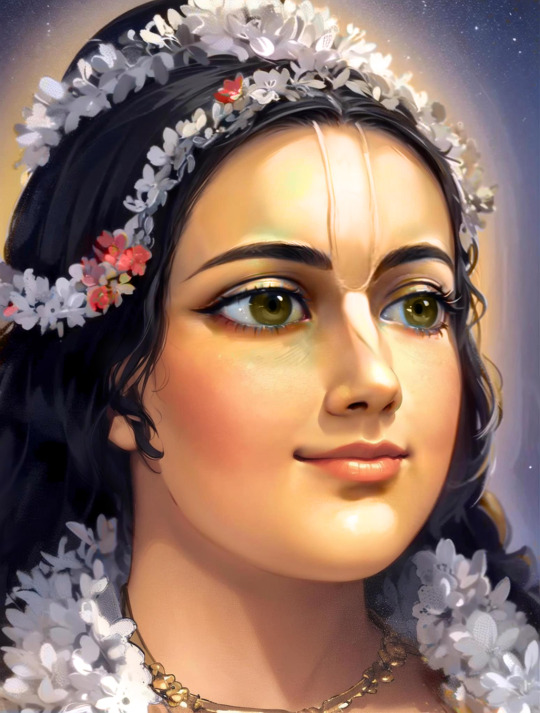
☀ ✨ SHRI NITYANANDA PRABHU ✨ ☀
✨ HAPPY NITYANANDA TRAYODASI ✨
"All glories to Lord Nityānanda, who is the life and soul of Śrī Caitanya Mahāprabhu! My dear Lord, kindly give me engagement in devotional service at Your lotus feet."~Śrī Caitanya-caritāmṛta Antya 11.6
13 notes
·
View notes
Photo
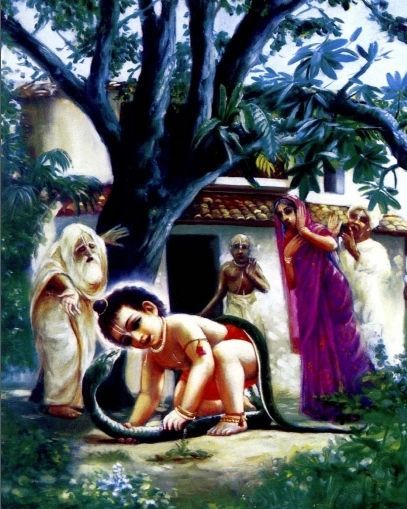
When the Lord was on the lap of His mother, He would at once stop crying as soon as the ladies surrounding Him chanted the holy names and clapped their hands. This peculiar incident was observed by the neighbors with awe and veneration. Sometimes the young girls took pleasure in making the Lord cry and then stopping Him by chanting the holy name. So from His very childhood the Lord began to preach the importance of the holy name. In His early age Lord Śrī Caitanya was known as Nimāi. This name was given by His beloved mother because the Lord took His birth beneath a nimba tree in the courtyard of His paternal house. When the Lord was offered solid food at the age of six months in the anna-prāśana ceremony, the Lord indicated His future activities. At this time it was customary to offer the child both coins and books in order to get some indication of the future tendencies of the child. The Lord was offered on one side coins and on the other the Śrīmad-Bhāgavatam. The Lord accepted the Bhāgavatam instead of the coins. When He was a mere baby crawling in the yard, one day a snake appeared before Him, and the Lord began to play with it. All the members of the house were struck with fear and awe, but after a little while the snake went away, and the baby was taken away by His mother. Once He was stolen by a thief who intended to steal His ornaments, but the Lord took a pleasure trip on the shoulder of the bewildered thief, who was searching for a solitary place in order to rob the baby. It so happened that the thief, wandering hither and thither, finally arrived just before the house of Jagannātha Miśra and, being afraid of being caught, dropped the baby at once. Of course the anxious parents and relatives were glad to see the lost child. https://sites.google.com/view/grantha-raja-srimad-bhagavatam/canto-1-creation/plate-1-intro-a-snake-appeared-before-the-baby Shri Krishna Chaitanya Prabhu Nityananda Shri Advaita Gadadhara Srivasa adi Gaura Bhakta Vrnda Hare Krishna Hare Krishna Krishna Krishna Hare Hare Hare Rama Hare Rama Rama Rama Hare Hare https://www.instagram.com/p/CphseJUoCs6/?igshid=NGJjMDIxMWI=
11 notes
·
View notes
Video
youtube
Who is Lord Nityananda? Why we celebrate Appearance of Nityananda? What ...
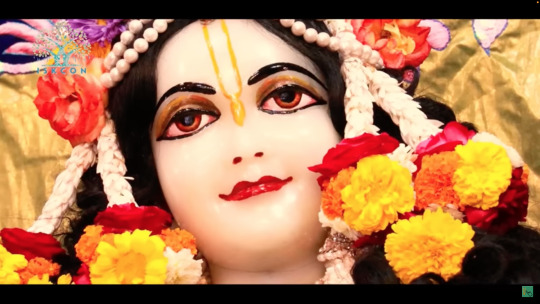


2 notes
·
View notes
Photo
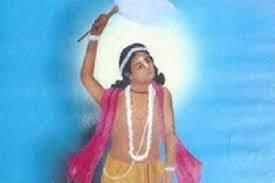
Govinda Ghosh Disappearance | Ramai Swami. Krsna dasa Kaviraja Goswami writes (CC Adi 10.115): “The three brothers, Govinda, Madhava, and Vasudeva were the eighty-second, eighty-third, and eighty-fourth branches of the Caitanya tree. Lord Caitanya and Nityananda used to dance in their kirtana performances. In his Caitanya-Caritamrta commentary, Srila Prabhupada writes: ”The three brothers, Govinda, Madhava and Vasudeva Ghosh all belonged to a kayastha family. Govinda established the Gopinatha temple in Agradvipa, where he resided. Madhava Ghosh was expert in performing kirtana. No one within this world could compete with him. He was known as the singer of Vrndavana and was very dear to Nityananda Prabhu. It is said that when the three brothers performed sankirtana, Lord Caitanya and Nityananda Prabhu would immediately dance in ecstasy. According to the gaura-ganoddessa-dipika (188), the three brothers were formely Kalavati, Rasollasa and Gunatunga, who recited the songs composed by Sri Visakha-gopi. The three brothers were among one of the seven parties that performed kirtana when Lord Caitanya Mahaprabhu attended the Rathayatra festival at Jagannatha Puri. Vakresvara Pandita was the chief dancer in their party. This is vividly described in the Madhya-lila,Chapter Thirteen, verses 42 and 43 [of Caitanya-Caritamrta]” Kaviraja Goswami further records (CC adi 10.117—118): “By the order of Sri Caitanya Mahaprabhu, three devotees accompanied Lord Nityananda Prabhu when He returned to Bengal to preach. These three were Ramadasa, Madhava, and Vasudeva Ghosh. Govinda Ghosh, however, remained with Sri Caitanya Mahaprabhu and thus felt great satisfaction.”
0 notes
Text
Today is the Appearance of Lord Nityananda. At the Hare Krishna temples tonight there will be a nice prasadam vegetarian feast of sanctified food served our after a big kirtan, and a discussion about Lord Nityananda Nitya means eternal and ananda is bliss, so one who associates with Lord Nityananda will be eternally blissful. These same activities can be done wherever we are online with others who have the enthusiasm and devotion
Here is a brief explanation https://www.youtube.com/watch?v=HsmhAX3R9_E&t=23s
1 note
·
View note
Text
Our first 3d characters are here! And They are none other than the propagators of Yuga-dharma, Sri Krishna Caitanya and Sri Nityananda Prabhu!
Lord Caitanya and Lord Nityananda, who are non-different from Sri Krishna and Sri Balarama, or Lord Ramachandra and Sri Lakshmana, appeared in Navadvipa, West Bengal in the 15th century to propagate the universal religion of this age, the congregational chanting of the Holy Names. They were both uncommonly beautiful, as evidenced from such descriptions as:
"The Lord’s charming looks easily overshadowed the attractiveness of millions of cupids. I am at a loss to find the appropriate similes to describe the beauty of the Lord, yet I venture to do so by His mercy alone. Otherwise, who would dare to attempt such an impossible task? He glowed like a mountain of gold, His body being smeared with sandal paste sometimes looked like the rising full moon. His curly dark tresses were decorated with fragrant malati garlands; a sweet smile clung intimately to His lips that could surely win the hearts of all the muses. Sandalwood tilaka with a red dot of vermilion clearly adorned His beautiful broad forehead. Chanting the name of Hari, He raised His arms up in the sky and danced. The knee-length flower garland around His neck swayed with each movement. His upraised arms glistened like fine tapering pillars of gold..."
(Sri Caitanya Bhagavata, Madhya-khanda, Ch.23)
Just as it is not possible to fully describe the Lord's beauty, it is also not possible to adequately replicate it in art. All we can do is pray and try humbly and sincerely. I can't say I was fully happy with the degree of refinement for Their faces, but had to stop somewhere and be satisfied with this first project before moving on! The facial features will be more refined when designing expressions and rigging the face.
ajanu-lambita-bhujau kanakavadatau
sankirtanaikapitarau kamalayataksau
visvambharau dvija-varau yuga-dharma-palau
vande jagat priya-karau karunavatarau
"I offer my respectful obeisances unto Sri Caitanya Mahaprabhu and Sri Nityananda Prabhu, whose arms extend down to Their knees, who have golden yellow complexions*, and who inaugurated the congregational chanting of the holy names of the Lord. Their eyes resemble the petals of a lotus flower; They are the maintainers of the living entities, the best of the brahmanas, the protectors of religious principles for this age, the benefactors of the universe, and the most merciful of all incarnations."
(Sri Caitanya Bhagavata, Adi-khanda, Chapter One, verse 1)
(*Lord Nityananda is sometimes described as having reddish-golden complexion, and sometimes as white. He is probably both, as He desires, but here we have opted for a whitish hue, as it seems to be more familiar with devotees.)
Srila Prabhupada once instructed his artists that "Paintings should be like the Deities, formal and worshipful."(Letter to Madhudvisa, 8 Dec 1973) Striving to adopt this mood, we have endeavored to make these models inspired by the bodily features and expressions of temple Deities, as well as descriptions found in scriptures. Let us know your thoughts on how successful we have been! We will surely keep working to improve.
Big shoutouts and many thanks to Julien Kaspar IG @julienkaspart for the Stylized Character Creation course on Blender Cloud and Dikko IG @dikko_art for the Modeling for Animation series on YouTube! Sincerely, without you guys we wouldn't be anywhere near completing our characters. We will keep learning and benefitting from your tutorials in the future! We also used numerous other tutorials for small details, they are saved in our 'Reference' playlist on YouTube.
Made from scratch fully in Blender 2.91. Posed with Mixamo, as we are just about to start learning rigging, hence deformations are not perfect. Rendered in Cycles, 256 samples. Polygon count per character (without clothes and decorations) 7,300. Estimated time taken to create Them in 3d - at least 70-80 hours (learning curve included). Landscape is also ours made from scratch, but not much refined as the main focus was the characters.
What's next for our 3d study? Well, more elaborate texturing, facial expressions, rigging and animation! What could be more exciting that animating the Supreme Animators of the world!
#characterdesign #3dcharacter #blender3d #nityananda #dancing #blendercharacter #mixamo #originalcharacter #harekrishna #mahaprabhu #mayapur #westbengal #sankirtana #vaishnava #krishna #iskcon #blenderart #beautiful #garland #navadvipa #nabadwip #divine #incarnation #god #chanting #nitai #gauranitai #3dlandscape #cg #blenderstart
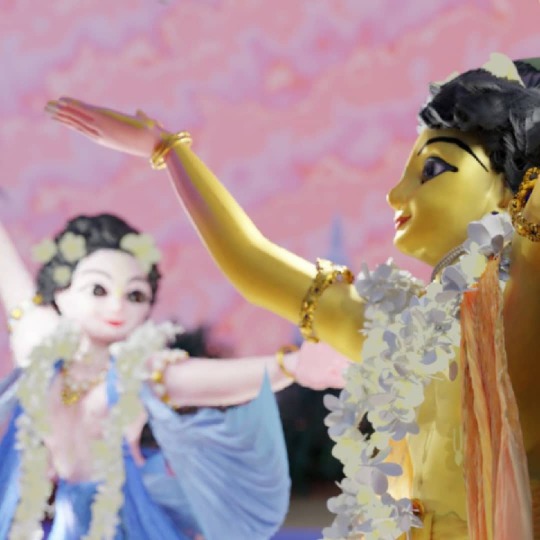
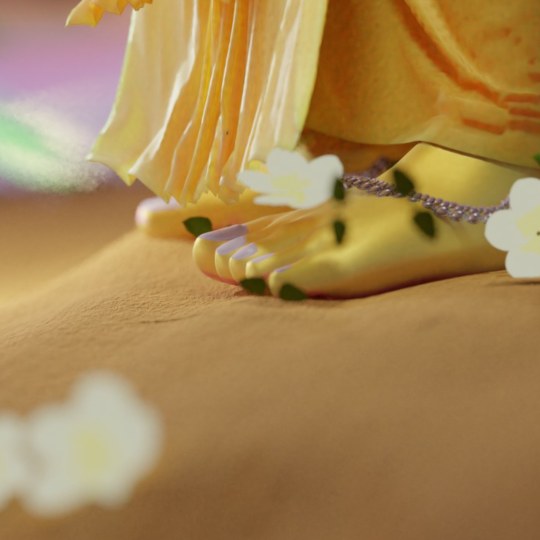
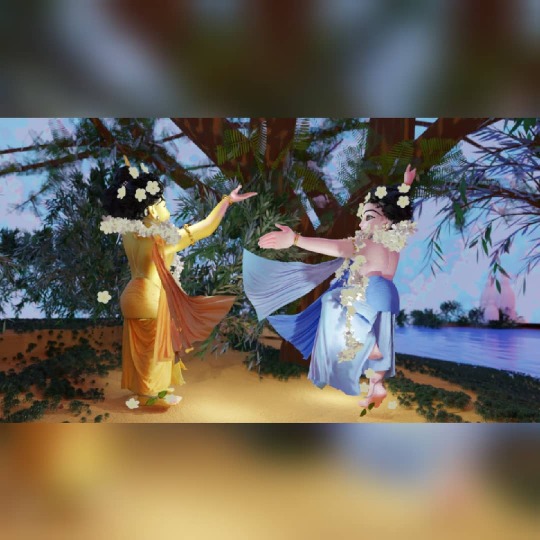
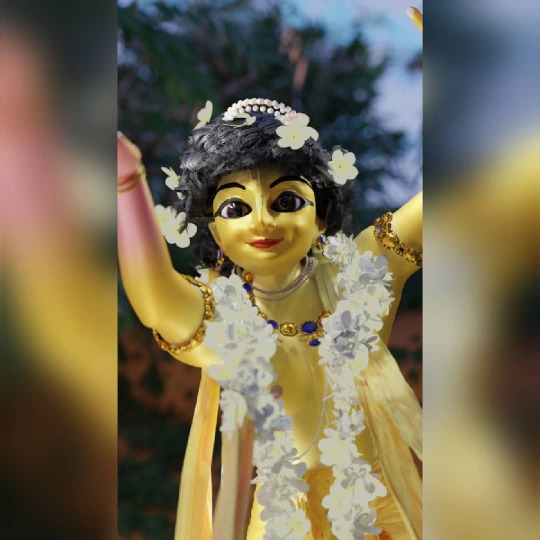
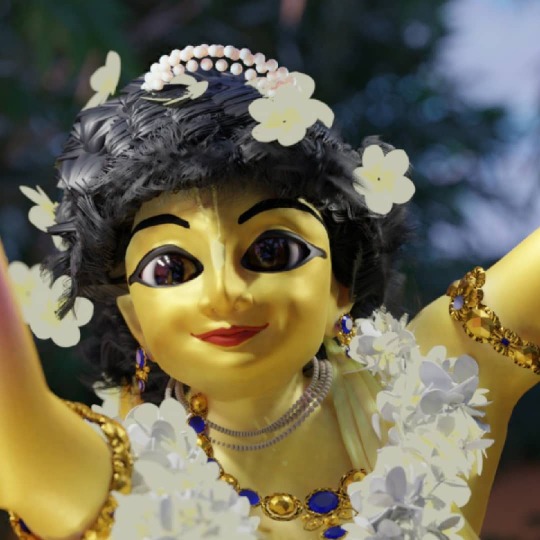
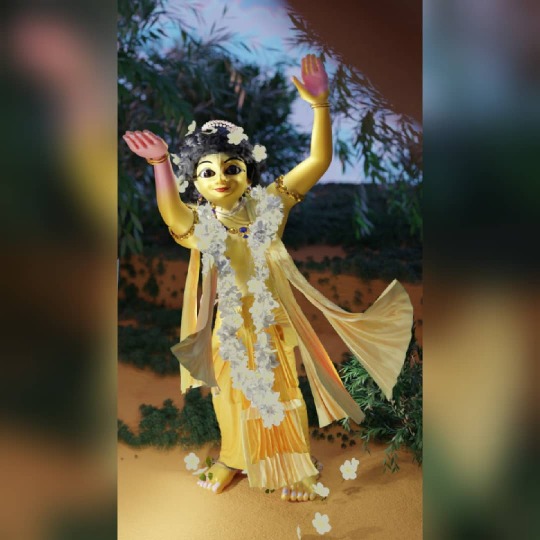
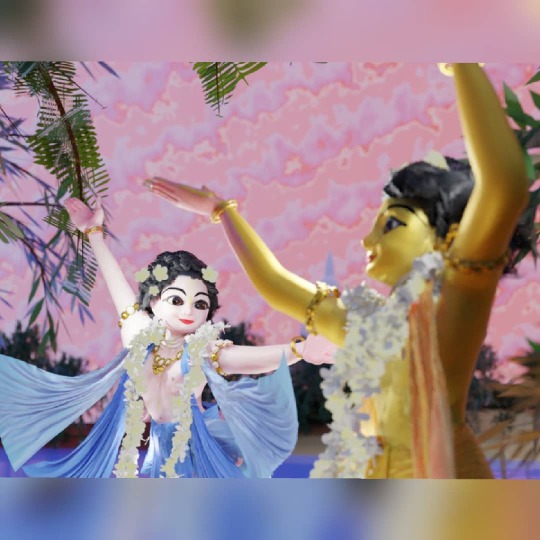
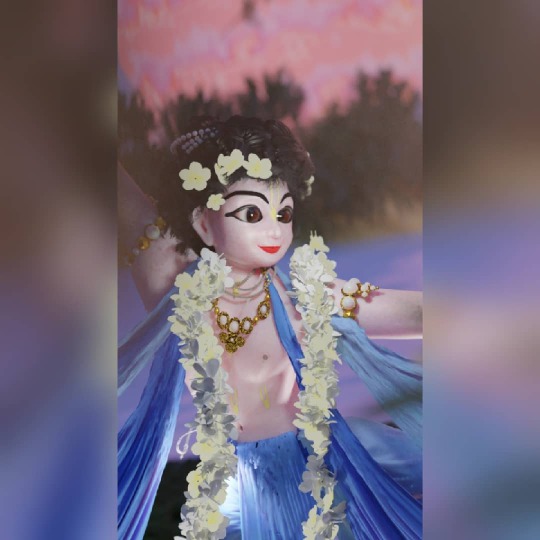
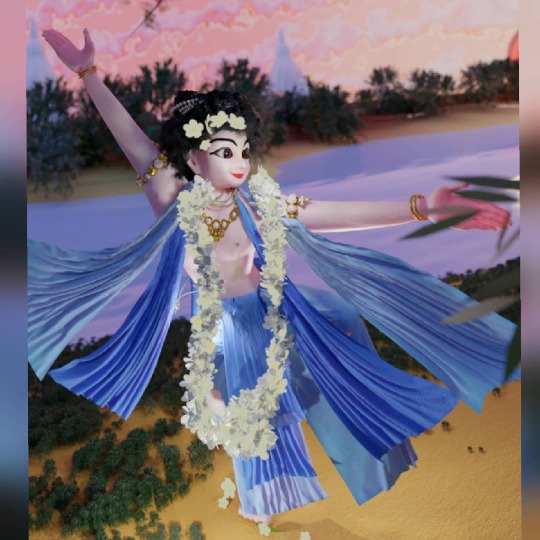
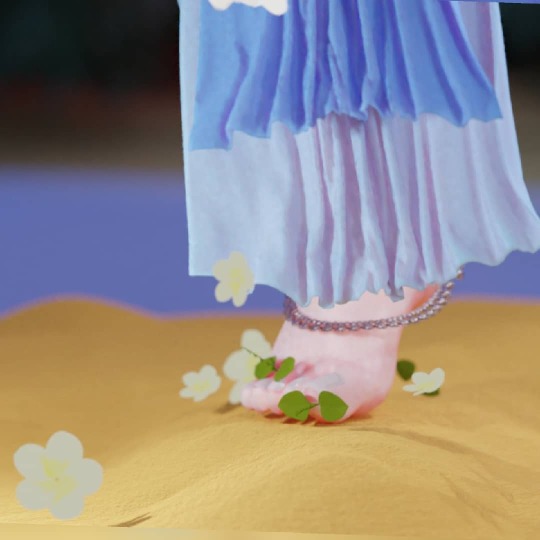
1 note
·
View note
Text
Sacred Badrinath
Badarinath is one of the holy shrines for Vaishnavites among the 108 divya desams incarnation of Lord Vishnu. Badrinath town is also the part of Panch Badri temples including Yog Dhyan Badri, Bhavishya Badri, Adi Badri and Vriddha Badri, along with Badrinath temple.

About Temple
The main entrance gate of Badarinath temple is colourful and imposing popularly known as Singhdwar. The temple is approximately 50 feet tall with a small cupola on top, covered with a gold gilt roof. The Badarinath temple is divided into three parts (a) The Garbha Griha or the sanctum sanctorum (b) The Darshan Mandap where rituals are conducted and (c) The Sabha Mandap where pilgrims assemble.
At the Badarinath Mandir Gate, directly opposite the main Idol of Lord himself, is seated idol of Bird Garud, vehicle / carrier of Lord Badarinarayan. Garud os seen is sitting position and in prayer with his hands folded. The walls and pillars of the mandapa are covered with intricate carvings.
The Garbha Griha portion has its canopy covered with a sheet of gold and houses Lord Badari Narayan, Kuber (God of wealth), Narad rishi, Udhava, Nar and Narayan. The complex has 15 idols. Especially attractive is the one-metre high image of lord Badarinath, finely sculpted in black stone. According to legend Shankara discovered a black stone image of Lord Badarinarayan made of Saligram stone in the Alaknanda River. He originally enshrined it in a cave near the Tapt Kund hot springs. In the sixteenth century, the King of Garhwal moved the murti to the present loction of the temple. It represents Lord Vishnu seated in a meditative pose called Padmasan.
Darshan Mandap: Lord Badari Narayan is armed with Conch and Chakra in two arms in a lifted posture and two arms rested in Yogic Pose. Badarinarayan is seen under the Badari tree, flanked by Kuber and Garuda, Narad, Narayan and Nar. As you look, standing to the right side of Badarinarayana is Uddhava. To the far right side are Nara and Narayana. Narada Muni is kneeling in front on the right side and is difficult to see. On the left side are Kubera-the god of wealth, and a silver Ganesh. Garuda is kneeling in front, to the left of Badarinarayana.
Sabha Mandap: It is a place in the Temple complex where pilgrims and pilgrims assemble.
History
The name of the Badarinath tirtha originates from local word Badari which is a type of a wild berry. It is said that when Lord Vishnu sat in penance in these mountains, His consort Goddess Laxmi took the form of a berry tree and shaded Him from the harsh sun. It is not only the dwelling place of Lord Vishnu Himself but also home to countless pilgrims, saints and sages, who meditate here in search of enlightenment.
"According to Skand Puran, the idol of Lord Badarinath was recovered by Adiguru Shankaracharya from Narad Kund and was re-enshrined in the 8th century A.D. in this temple."
According to Hindu Tradition, Badarinath often called as Badari Vishal, was re-established by Adi Shri Shankaracharaya to revieve the lost prestige of Hinduism and to unite nation in one bond. It was built in the ages when Buddhism was spreading in the Himalayan range and there was worry that Hinduism was losing it's importance and glory. So the Adi Sankaracharya took it upon himself to bring back the glory of Hinduism and built temples in the Himalayas for the Hindu Gods of Shiva and Vishnu. The Badarinath temple is one such shrine and is richly infused with sacred accounts from numerous ancient Hindu scriptures. Be it the puranic story of the Pandav brothers, along with Draupadi, going past on their last pilgrimage by ascending the slopes of a peak near Badarinath called Swargarohini or the 'Ascent to Heaven' or the visit by Lord Krishna and other great sages, these are just some of the many tales which we associate with this holy tirtha.
The famed Skanda Purana describes more about the place as "There are several sacred shrines in heaven, on earth, and in hell; but there is no shrine like Badarinath."
According to Vamana Purana, the sages Nara and Narayana 'fifth avatar of Lord Vishnu' performed Penances here.
Great sages of yore like Kapila Muni, Gautam, Kashyap have performed penance here, Bhakta Narada attained salvation and Lord Krishna loved this region, medieval religious scholars like Adi Shankaracharya, Ramanujacharya, Sri Madhavacharya, Sri Nityananda have come here for learning and quiet contemplation and so many still continue to do even today.
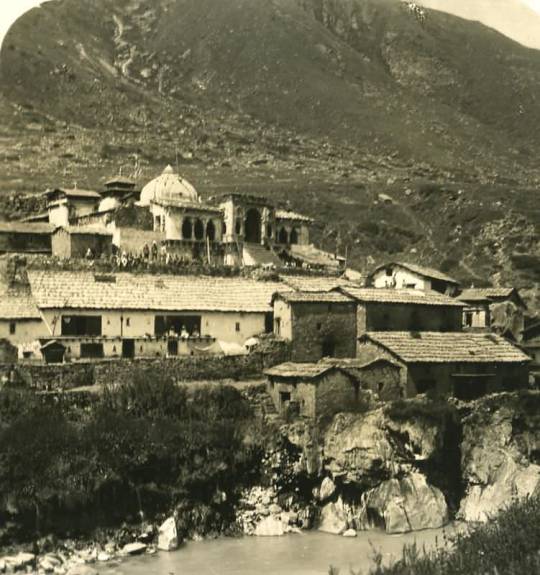
Badrinath Temple near Alaknanda River in 1906

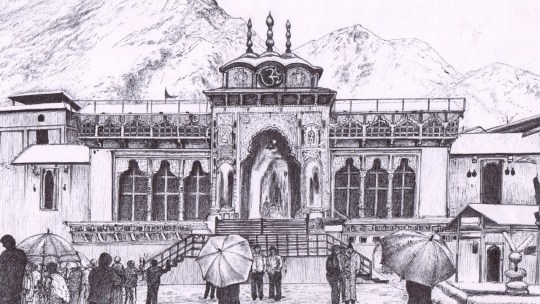


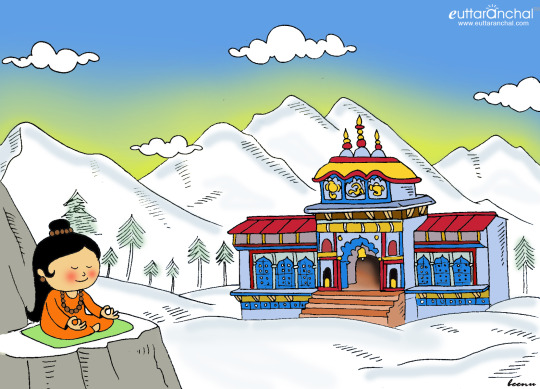
How to Reach ?

Neel Sunder Jalan
6 notes
·
View notes
Text
Sri Chaitanya Bhagavat Adi Lila Chapter Three By Srila Vrindavan Das Thakur
Even before He took his birth, the Lord propagated the chanting of His holy name. Streams of people went for their bath in the Ganga at the time of the eclipse and all the way they chanted the Lord's name. Some, who from their birth never once uttered the Lord's name, now chanted that name on their way to the Ganga. The sound of chanting emanated from every direction and the Supreme Lord, the best of the brahmins, smiled to Himself as He made His appearance. Sri Jagannatha Misra and Srimati Sacidevi glanced at their child's beautiful face and were overcome with unbounded joy. Ladies stood around the child not knowing what to do; fussily they ululated in jubilation. Relatives and friends hurried to see the new born child; Sri Jagannatha Misra's house was a scene of great exultation. Srimati Sacidevi's father, Sri Nilambara Cakravarti, found esoteric and wonderful signs in every house of the child's astrological chart. Sri Cakravarti was astounded by the baby's beauty and saw all divine symbols on His person. A much accepted prophesy in Bengal was that someday a king would be born in Bengal as a brahmin's son, so Sri Cakravarti thought that only the future would prove whether this was the child. In the presence of all, Sri Nilambara Cakravarti, an expert astrologer, began explaining the ramifications of different astrological signs in the Lord's chart. The further he delved into the child's exalted chart, the more difficulty he found in describing the Lord's position. The child will conquer Brhaspati (the sign for learning and education) and be a scholar; He will be a natural repository of all divine qualities. Present in that gathering was a great saint in the guise of a brahman who made predictions on the Lord's future. The brahman said, "This child is the Supreme Lord Narayana Himself. He will establish the essence of all religion. "He will initiate a wonderful preaching movement and deliver the whole world. "He will give everyone that which is forever desirable even by Lord Brahma, Lord Siva or Srila Sukadeva Gosvami. "Upon seeing Him people will feel compassion for all living entities and become callous toward material pains and joys. This will be the great benediction for the whole world. "Not to mention ordinary men, even hard-core atheists will worship the child's lotus feet. "He will be glorified throughout the entire creation and people from all orders of life will come to worship Him. "He is the personification of pure Bhagavat religion (eternal religion), the benefactor of brahmanas, cows and devotees and the affectionate, devoted son of His parents. "This child has come to accomplish great works, just as the Supreme Lord Narayana incarnated to re-establish religious principles "Who can explain the imports of this child's exalted astrological and esoteric symptoms? "How fortunate you are, Sri Jagannatha Misra, a leader amongst men. I offer my obeisances to you, the illustrious father of this child. "I feel greatly fortunate that I could calculate his astrological chart. His name accordingly will be Sri Visvambhara. "He will be known to all as Navadvipa-candra (the moon of Navadvipa). He is spiritual bliss personified." The brahmin did not speak further about Lord Caitanya's pastime of accepting the renounced order of sannyasa since that would disturb the loving emotion of His parents. Sri Jagannatha Misra was enthralled with ecstasy over the descriptions of his son. He immediately wanted to offer gifts to the brahmin. He was a poor man with few possessions, yet feeling great jubilation Sri Misra fell at the brahmin's feet and cried. The brahman also caught Sri Misra's feet, and everyone present shouted "Hari, Hari" in great joy. The relatives and friends were all praise for the child, and they blessed Him as they heard the super-natural predictions about His future. Soon the musicians arrived playing their respective instruments - clay drums, flutes and shanhai (a reed instrument) - and filled the air with wonderful music. Ladies from the higher planets mingled freely yet unnoticed with the ladies from earth in this wonderful gathering. The mother of the demigods (Aditi) smiled and placed her right hand holding auspicious grass and paddy on the child's head to bless him saying, "Long life". "Please remain eternally in this material world and manifest Your pastimes". This explained the expression "Long life". Srimati Sacidevi and the others noticed the extraordinary beauty of these ladies but they hesitated to inquire about their identity. The demigods respectfully took the dust from Sacidevi's feet, and she lost her speech in extreme exultation. Neither the Vedas nor Lord Ananta Sesa could describe the waves of jubilation that drowned Sri Jagannatha Misra's house. Entire Nadia seemed to be present at Sacidevi's house to experience that undescribable joy. Wherever the people were - in their houses, or on the banks of the Ganga, or on the streets, - they all loudly chanted the Lord's name. Everyone jubilantly celebrated the Lord's birth, unknowingly thinking the festivity was actually for the lunar eclipse. Lord Caitanya appeared on the full moon night of the month of Phalguna; this day is the most worshipable by Lord Brahma and other great personalities. This day of the Lord's appearance is the holiest of holy occasions; this day is devotion personified. Lord Caitanya appeared on the full moon night of Phalguna and Lord Nityananda appeared on the 13th night of the waxing moon. Both these days are all auspicious and transcendental occasions. If one properly follows these two holy occasions he develops love of Godhead and cuts asunder the knots of material illusion. The appearance days of pure Vaisnava devotees like the appearance day of the Supreme Lord, are also all-auspicious and transcendental. Whosoever hears the narrations of Lord Caitanya's birth is freed from all miseries in life and in death. Anyone who hears Lord Caitanya's pastimes immediately gets love of God and becomes his eternal servitor; he comes with the Lord each time He advents in this material world. The Adi Khanda text is wonderful to hear because it contains descriptions of Lord Caitanya's appearance. The Vedic literature describes these pastimes of the Lord as eternal, although He sometimes appears and sometimes disappears. Lord Caitanya's pastimes have no beginning and no end; I write them down by the mercy of the Lord. I offer my humble obeisances at the Lord's feet and at the feet of all His devotees. I pray that I may be excused from all offenses. I, Vrndavana dasa, offer this song to the lotus feet of my life and soul, Lord Sri Krsna Caitanya and Lord Sri Nityananda Prabhu.
4 notes
·
View notes
Photo
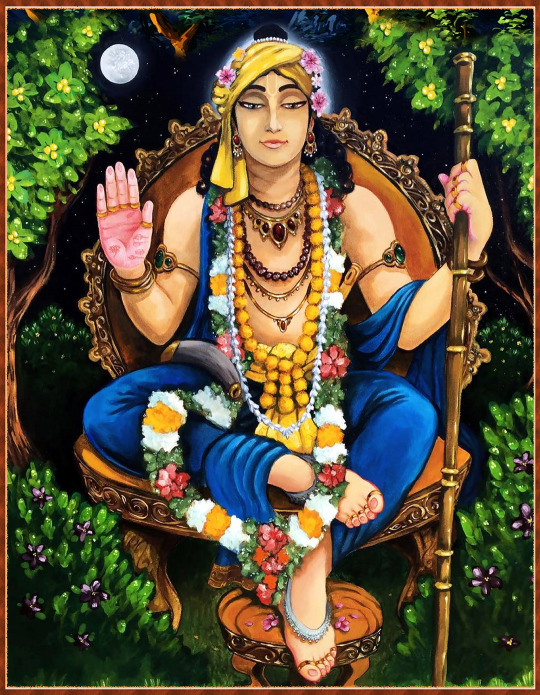
☀ ✨ SHRI NITYANANDA PRABHU ✨ ☀
✨ HAPPY NITYANANDA TRAYODASI ✨
"I bow down to the Supreme Lord Nityananda Prabhu, the crest jewel of all avadhutas, who gives the topmost ecstatic bliss to all by freely distributing the Holy names of Krishna."~Nityananda pranam
22 notes
·
View notes
Photo
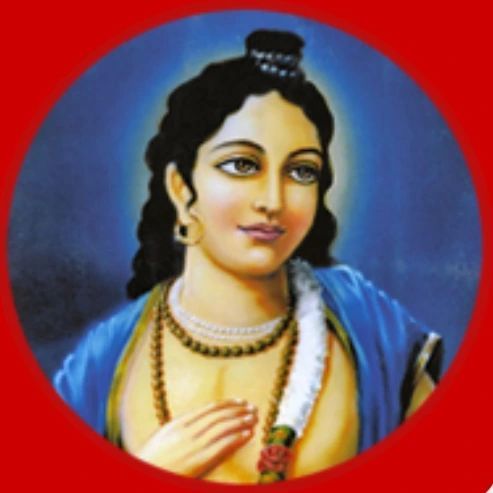
Nityananda Trayodashi: Shri Nityananda appearance day Lord Nityananda’s Appearance Day lecture by HDG Shrila A.C.Bhaktivedanta Swami Prabhupada: Some nectar about Lord Nityananda in brief: Lord Nityananda is the eternal associate of Chaitanya Mahaprabhu, the Supreme Personality of Godhead. Rarely is the name Nimai (Chaitanya Mahaprabhu) taken without that of Nitai (Lord Nityananda). Mahaprabhu cannot be approached or understood without the mercy of Nityananda Prabhu, who is the cardinal guru of all the universes and serves as an intermediary between Mahaprabhu and His devotees. He is the Lord’s active principle in both creation and lila. He is the second body of the Lord, manifesting as Balaram to Shri Krishna, Lakshman to Shri Ram and Nityananda Prabhu to Chaitanya Mahaprabhu. All other forms and expansions of the Lord emanate from this second body. Nityananda Prabhu is thus the source of Sankarshan, all the Vishu’s, and Ananta Sesa. As Vishnu tattva He and Advaita Acharya are worshipped in the same category as Chaitanya Mahaprabhu. In the manifested earthly lila, Nityananda Prabhu is senior to Chaitanya Mahaprabhu by more than a decade. He is statuesque, like His Master, with the whitish complexion of Lord Balarama. His garments resemble a cluster of blue lotus flowers and His effulgence is said to surpass the grandeur of a rising moon at sunset. He has a deep melodious voice, constant singing the glories of Shri Krishna and carries a red stick with benedictions for the devotees, but feared by the demoniac. He has the carefree mood of a wild avadhuta, so absorbed is He in the love of Godhead, and no one knows what He will do next. Nityananda Prabhu was born in Ekacakra, a small village in present West Bengal, around the year 1474. His birthsite is commemorated by a temple named Garbhasva and is visited by throngs of pilgrims today. His father, Hadai Ojha and mother Padmavati, were pious Brahmans originally from Mithila. Nityananda Prabhu was born on the auspicious thirteenth day of the bright fortnight of the month of Maga. As a child, Nitai (as Nityananda Prabhu was called), loved to enact the pastimes of Shri Krishna or Lord Rama. https://www.instagram.com/p/CoMJvrmoJh_/?igshid=NGJjMDIxMWI=
4 notes
·
View notes
Photo

The Glories of Lord Nityānanda BalarāmaŚrī Caitanya-caritāmṛta » Ādi-līlā » Chapter 5http://prabhupada.io/books/cc/adi/5
Who is Lord Nityananda?Lord Nityananda is the eternal associate of Chaitanya Mahaprabhu. Chaitanya Mahaprabhu cannot be approached or understood without the mercy of Nityananda Prabhu. He has the whitish complexion of Lord Balarama & has a deep melodious voice, constantly singing the glories of Sri Krishna... To know more https://www.iskconbangalore.org/lord-nityanandaPicture: A very rare painting of Lord Nityananda Prabhu.
2 notes
·
View notes
Photo
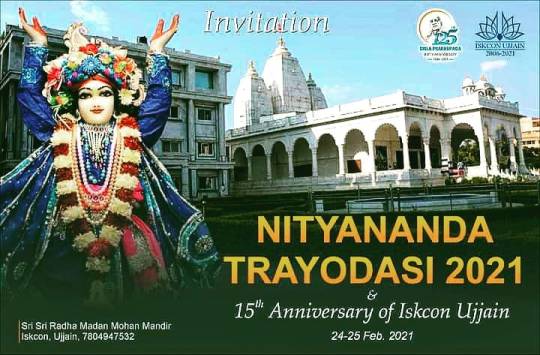
👉 Without mercy of Nityananda Prabhu no body can approach to Radha-Krishna. 👉 Would you like to get mercy of Radha-Krishna, so please observe Nithyananda trayodashi, appearance day of Nityananda Prabhu, who is Balaram Himself(in the pasttimes of Lord Krishna). 👍 #iskconujjain (at Iskcon Temple Ujjain) https://www.instagram.com/p/CLjwfQ4jwPA/?igshid=1ed4hsowgx99v
0 notes
Text
Lord Nityananda is the eternal associate of Caitanya Mahaprabhu, the Supreme Personality of Godhead. Rarely is the name Nimai (Caitanya Mahaprabhu) taken without that of Nitai (Lord Nityananda). Mahaprabhu cannot be approached or understood without the mercy of Nityananda Prabhu, who is the cardinal guru of all the universes and serves as an intermediary between Mahaprabhu and His devotees. He is the Lord’s active principle in both creation and lila. He is the second body of the Lord, manifesting as Balaram to Sri Krishna, Lakshman to Sri Ram and Nityananda Prabhu to Caitanya Mahaprabhu. All other forms and expansions of the Lord emanate from this second body. Nityananda Prabhu is thus the source of Sankarshan, all the Vishu’s, and Ananta Sesa. As Vishnu tattva He and Advaita Acarya are worshipped in the same category as Caitanya Mahaprabhu.
Lord Nityananda is the eternal associate of Caitanya Mahaprabhu, the Supreme Personality of Godhead. Rarely is the name Nimai (Caitanya Mahaprabhu) taken without that of Nitai (Lord Nityananda). Mahaprabhu cannot be approached or understood without the mercy of Nityananda Prabhu, who is the cardinal guru of all the universes and serves as an intermediary between […]Lord Nityananda is the eternal…
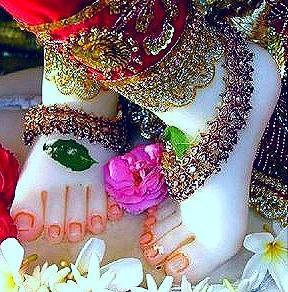
View On WordPress
0 notes
Video
youtube
Who is Lord Nityananda? Why we celebrate Appearance of Nityananda? What ...
0 notes
Text
Prasadam-Prayer
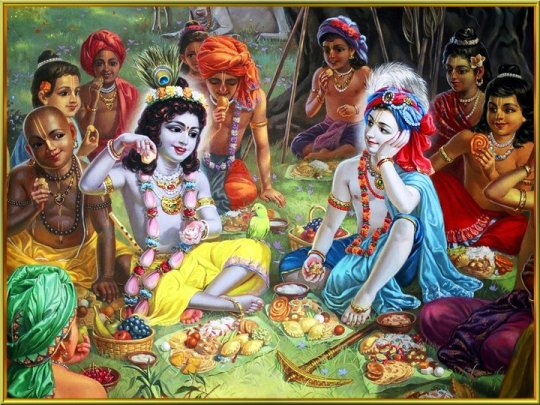

Purport by A.C. Bhaktivedanta Swami Prabhupada
The tongue is the most important sense within the body. Therefore it is recommended that if we want to control our senses we should first control the tongue. Srila Bhaktivinoda Thakura has emphasized this. He describes our present conditioned state as sarira avidya-jal: we are packed up in the network of this material body, and we are just like a fish caught within a net. And not only are we caught in this body; we are also changing this "net" life after life, through 8,400,000 species. In this way we stay caught in the network of ignorance. Then, jodendriya tahe kal: our imprisonment within this network of ignorance is being continued on account of our desire for sense enjoyment. And out of all the senses, Bhaktivinoda Thakura says, the tongue is the most dangerous.
If we cannot control the tongue, then the tongue will oblige us to take different types of bodies, one after another. If a person is very much fond of satisfying his tongue by eating flesh and blood, then material nature will give him the facility to regularly taste fresh flesh and blood: he will get the body of a tiger or some other voracious meat-eating animal. And if one does not discriminate in his eating--if he eats all kinds of nonsense, everything and anything--then material nature will give him a hog's body, in which he will have to accept stool as his food. So much suffering is caused by the uncontrolled tongue.
There are six kinds of rasas (tastes), and if one is agitated by any one of them, he becomes controlled by the urges of the tongue. Some persons are attracted to the eating of meat, fish, crabs, eggs and other things produced by semina and blood and eaten in the form of dead bodies. Others are attracted by eating vegetables, creepers, spinach or milk products, but all for the satisfaction of the tongue's demands. Such eating for sense gratification-including the use of extra quantities of spices like chili and tamarind-is to be given up by Krishna conscious persons. The use of pan, haritaki, betel nuts, various spices used in pan-making, tobacco, LSD, marijuana, opium, liquor, coffee and tea is indulged in to fulfill illicit demands.
If we can practice accepting only remnants of food offered to Krishna, it is possible to get free from maya's victimization. Vegetables, grains, fruits, milk products and water are proper foods to offer to the Lord, as Lord Krishna Himself prescribes. However, if one accepts prasada only because of its palatable taste and thus eats too much, he also falls prey to trying to satisfy the demands of the tongue.
Shri Chaitanya Mahaprabhu taught us to avoid very palatable dishes even while eating prasada. If we offer palatable dishes to the Deity with the intention of eating such nice food, we are involved in trying to satisfy the demands of the tongue. If we accept the invitation of a rich man with the idea of receiving palatable food, we are also trying to satisfy the demands of the tongue. In Chaitanya-caritamrita (Antya 6.227) it is stated:
jihvara lalase yei iti-uti dhaya / shishnodara-parayana krishna nahi paya
"That person who runs here and there seeking to gratify his palate and who is always attached to the desires of his stomach and genitals is unable to attain Krishna."
As stated before, the tongue, belly and genitals are all situated in a straight line, and they fall in the same category. Lord Chaitanya has said, bhala na khaibe ara bhala na paribe: "Do not dress luxuriously and do not eat delicious foodstuffs." (Cc. Antya 6.236)
Those who suffer from diseases of the stomach must be unable to control the urges of the belly, at least according to this analysis. When we desire to eat more than necessary we automatically create many inconveniences in life. However, if we observe fasting days like Ekadashi and Janmashtami, we can restrain the demands of the belly.
As far as the urges of the genitals are concerned, there are two-proper and improper, or legal and illicit sex. When a man is properly mature, he can marry according to the rules and regulations of the shastras and use his genitals for begetting nice children. That is legal and religious. Otherwise, he may adopt many artificial means to satisfy the demands of the genitals, and he may not use any restraint. When one indulges in illicit sex life, as defined by the shastras, either by thinking, planning, talking about or actually having sexual intercourse, or by satisfying the genitals by artificial means, he is caught in the clutches of maya. These instructions apply not only to householders but also to tyagis, or those who are in the renounced order of life. (Nectar of Instruction)
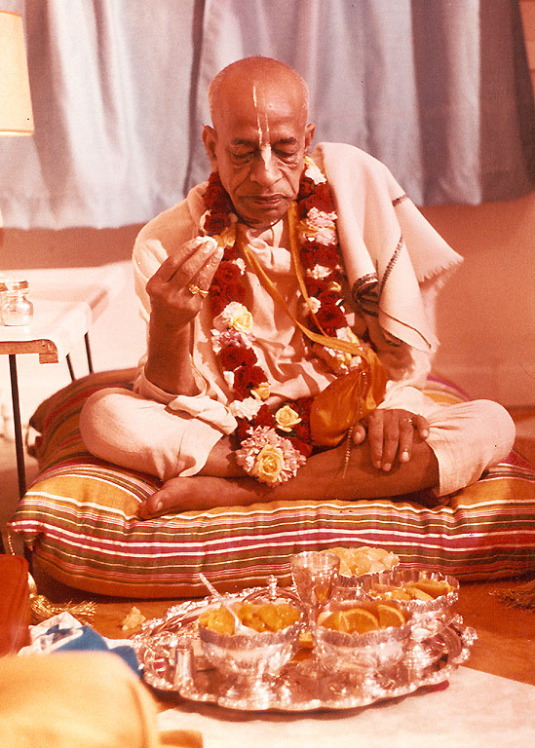
HONOURING THE LORD'S PRASADA
One should respect the prasada of the Lord by first offering one's obeisances to it, then singing its glories, then chanting the maha-mantra and uttering the prema-dvani to the spiritual master, acaryas, Sri Caitanya Mahaprabhu, Sri Radha-Krsna and all the assembled Vaisnavas.
The Glorification of the Lord's Prasada
naivedyam jagadisasya
anna-panadikam ca yat
bhaksyabhaksya-vicaras ca
nasti tad-bhaksane dvijah
brahmavan-nirvikaram hi
yatha visnus tathaiva tat
vikaram ye prakurvanti
bhaksane tad dvijatayah
kustha-vyadhi-samayuktah
putra-dara-vivarjitah
nirayam yanti te vipras
tasman navartate punah
"O brahmanas, in the eating of food such as rice and water, etc., which has been tasted by the Lord of the universe, Sri Krsna, there is no consideration of whether it is eatable or uneatable. Just as Lord Visnu is spiritual and is not subject to mundane transformation, so in the same way His prasada is spiritual and untransformable. Those brahmanas, who consider that in the eating of visnu-prasada there is some mundane transformation of its spiritual qualities and thus it can become contaminated by contact with someone's mouth or hands, become afflicted with leprosy, become bereft of their sons and wife, and go to hell, never again to return from that place."
(Visnu Purana)
maha-prasade govinde
nama-brahmani vaisnave
svalpa-punya-vatam rajan
visvaso naiva jayate
(Mahabharata)
"O king, for those who have amassed very few pious activities, their faith in maha-prasada, in Sri Govinda, in the Holy Name and in the Vaisnava is never born."
Prasada-sevaya
(from Bhaktivinoda Thakura's Gitavali)
1) bhai-re!
sarira abidya-jal, jodendriya tahe kal,
jibe phele bisaya-sagore
ta'ra madhye jihva ati, lobhamoy sudurmati
ta'ke jeta kathina somsare
2) krsna baro doyamoy, karibare jihva jay,
swa-prasad-anna dilo bhai
sei annamrta khao, radha-krsna-guna gao,
preme dako caitanya-nitai
"O brothers! This material body is a place of ignorance, and the senses are a network of paths to death. The senses throw the soul into this ocean of material sense enjoyment and, of all the senses, the tongue is most voracious and uncontrol-lable; it is very difficult to conquer the tongue in this world. O brothers! Lord Krsna is very kind to us and has given us such nice prasada, just to control the tongue. Now let us take this prasada to our full satisfaction and glorify Their Lordships, Sri Sri Radha and Krsna and, in love, call for the help of Lord Caitanya and Prabhu Nityananda."
1) bhai-re!
ek-dina santipure, prabhu advaitera ghare,
dui prabhu bhojane bosilo
sak kori' asvadana, prabhu bole bhakta-gana,
ei sak krsna asvadilo
2) heno sak-asvadane, krsna-prema dise mane,
sei preme koro asvadana
jada-buddhi pari-hari', prasada bhojana kori',
'hari hari' bolo sarva-jan
"O brothers! One day at Santipura, in Sri Advaita's house, Lord Caitanya and Nityananda were seated at prasada. When Lord Caitanya tasted the green vegetables, He said, 'My devotees, this sak is so delicious! Lord Krsna has definitely tasted it. At the taste of such sak as this, love of Krsna arises in the heart. In such love of God you should take this prasada. Giving up all materialistic conceptions and taking the Lord's prasada, all of you just chant 'Hari! Hari!'"
1) bhai-re!
sacir angane kabhu, madhavendra-puri prabhu,
prasadanna koren bhojana
khaite khaite ta'ra, ailo prema sudurbar
bole, suno sannyasirf gana
2) moca-ghanta phula-bari, dali-dalna-caccari,
saci-mata korilo randhana
ta'ra suddha bhakti heri', bhojana korilo hari,
sudha-sama e anna-byanjana
3) joge jogi pay jaha, bhoge aj ha'be taha
'hari boli' khao sabe bhai
krsnera prasad-anna, tri-jagat kore dhanya,
tripurari nace jaha pai'
"O brothers! Whenever Madhavendra Puri took prasada in the courtyard of Mother Saci, uncontrollable ecstatic symptoms of love of God overwhelmed him while he ate. O assembled sannyasis, just listen to this. Mother Saci cooked and prepared semi-solid preparations made with banana flowers, a special dahl preparation, baskets of fruits, small square cakes made of lentils and cooked-down milk and many other varieties of prasada. Seeing her pure devotion, Lord Krsna personally ate all these different vegetable preparations, which were just like nectar. All the results the mystic obtains in the execution of yoga will be obtained today in the taking of the prasada of the Lord. O brothers! Everyone simply eat the prasada of Lord Hari and chant His holy name. The entire universe glorifies and praises the prasada of Lord Krsna. Obtaining that prasada, Lord Siva dances in great joy."
1) bhai-re!
sri-caitanya nityananda, srivasadi bhakta-brnda,
gauridasa panditer ghare
luci,cini khir, sar, mithai, payas,ara,
pitha-pana asvadan kore
2) mahaprabhu bhakta-gane, parama-ananda-mane
ajna dilo korite bhojana
krsnera prasad-anna, bhojane ho-iya dhanya
'krsna' boli' dake sarva-jan
"O brothers! Lord Caitanya and Lord Nityananda, along with all Their devotees headed by Srivasa Thakura, relish and taste different varieties of prasada at the home of Gauridasa Pandita. They are taking puris made with white flour and sugar, khir, solid cream collected over yogurt, sweetmeats, sweet rice and many kinds of cakes and condensed milk preparations. Mahaprabhu, Sri Krsna Caitanya, gave the order to all His devotees, in whose minds there was transcendental bliss, to eat the prasada of the Lord. Becoming very ecstatic by eating the prasada of the Lord, everyone chanted 'Krsna! Krsna!'"
1) bhai-re!
ek-din nilacale, prasad-sevana-kale,
mahaprabhu sri-krsna-caitanya
bolilen bhakta-gane, khecaranna suddha-mane,
seva kori' hao aj dhanya
2) khecaranna pitha-pana apurba prasad n(?)a,
jagannatha dilo toma sabe
akantha bhojana kori', bolo mukhe 'hari (?),
abidya-durita nahi ra'be
3) jagannatha-prasadanna, birinci-sambhur m(?)a,
khaile prema ho-ibe udoy
emana durlabha dhana, paiyacho sarva-jana
jaya jaya jagannatha jaya
"O brothers! One day in Jagannatha Puri, at the time of honouring the Lord's prasada, Lord Caitanya said to all the devotees, 'Honouring the khichuri of the Lord with a pure mind, may you become blessed on this day. Lord Jagannatha gave to all of you varieties of extraordinary and wonderful prasada, such as khichuri and many kinds of cakes and condensed milk preparations. Therefore, take all of this prasada till you are filled up to the neck and chant 'Hari! Hari!' In such a transcendental atmosphere ignorance and sin will not remain. This prasada of Lord Jagannatha is even worshipable for Lord Brahma and Lord Siva. Upon eating it, love of God will certainly arise within the heart. All of you have obtained such a rarely obtained treasure. All glories, all glories, all glories to Lord Jagannatha.'"
1) bhai-re!
rama-krsna gocarane, jaiben dura bane,
eta cinti' jasoda-rohini
khir, sar, chana, nani, du'jane khaowano ani',
batsalye ananda mane gani'
bayasya rakhala-gane, khay rama-krsna-sane,
nace gay ananda-antare
krsner prasad khay, udara bhoriya jay,
'ara deo' 'ara deo' kare
"O brothers! One day Mother Yasoda and Mother Rohini were thinking: 'Today our two boys Balarama and Krsna will go to a forest to tend Their cows.' Thus contemplating in such ecstasy of parental affection, they prepared a wonderful feast for the two boys consisting of khir, solid cream collected over yogurt, curd and fresh yellow butter. All the cowherd boyfriends took lunch with Balarama and Krsna and danced and sang in ecstasy within their hearts. They all ate the remnants of Krsna's lunch and filled up their bellies saying, 'Give us more, give us more!'"

5 notes
·
View notes